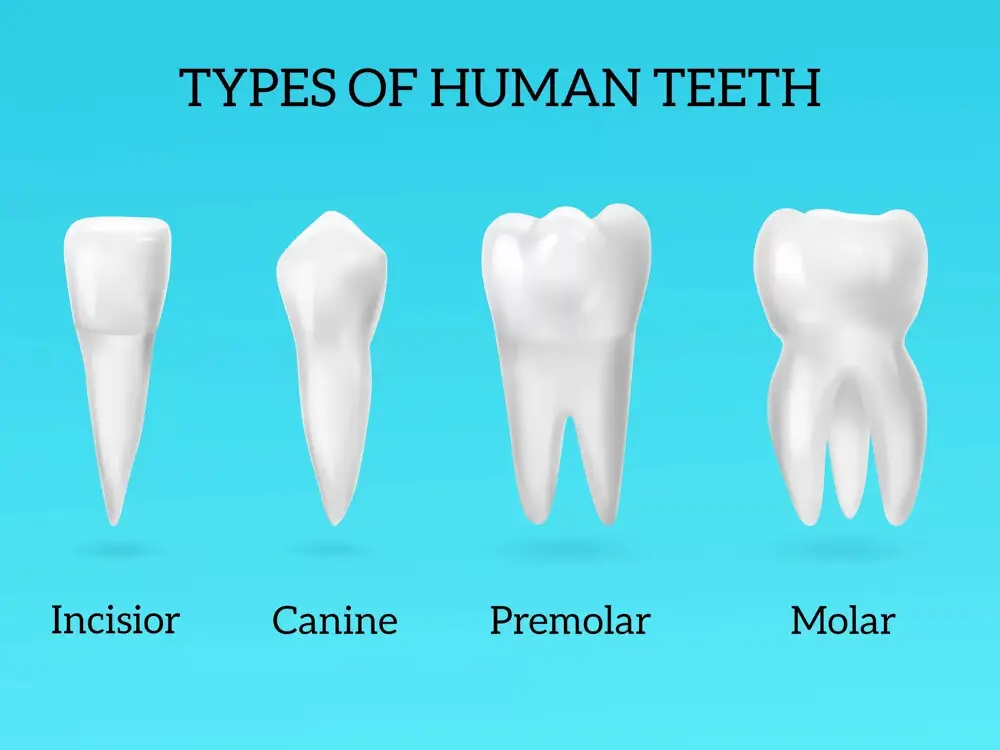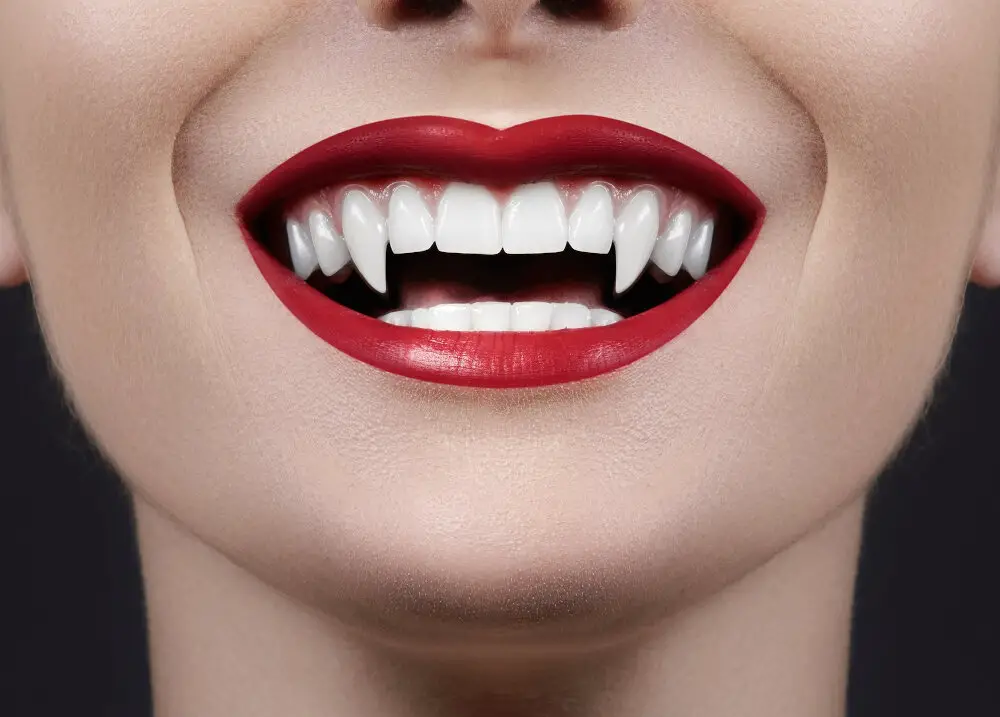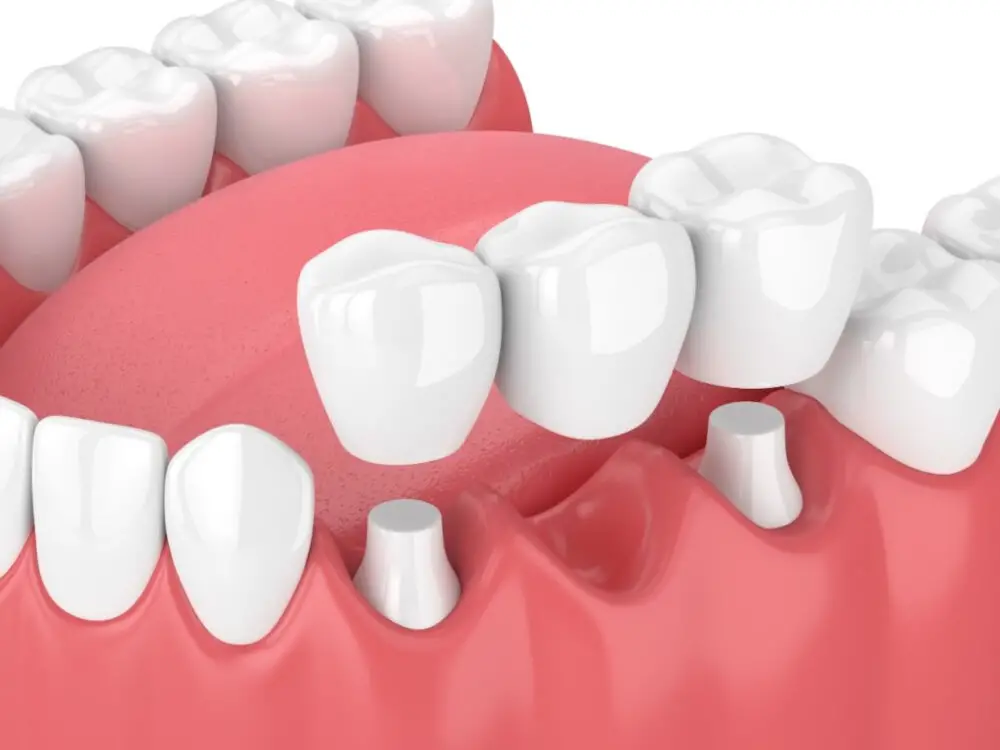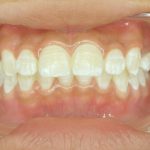Why Teeth Turn Transparent: Causes and Treatment Options

Teeth are one of the most prominent features of the face, and people often strive to maintain their pearly whites for a beautiful smile. However, sometimes teeth can turn transparent, which can cause concern and insecurity. Transparent teeth can be caused by a variety of factors, including genetics, aging, and poor oral hygiene. Fortunately, there are treatment options available to help restore the natural appearance of teeth and improve overall dental health. One of the primary causes of transparent teeth is enamel erosion, which is the gradual wearing down of the protective outer layer of the tooth. This can be caused by a variety of factors, such as acidic foods and drinks, aggressive brushing, and teeth grinding. Enamel erosion can also be the result of genetics or aging, as the enamel naturally thins over time. When the enamel wears down, it can reveal the underlying layer of dentin, which is naturally yellowish in color. This can cause teeth to appear translucent or even grayish in color. Fortunately, there are several treatment options available to help restore the appearance of teeth affected by enamel erosion.
Transparent teeth are a condition where the teeth have lost their natural white color and become translucent or transparent. This condition is caused by the thinning of the enamel layer, which is the outermost layer of the teeth that protects them from damage. As the enamel wears away, the teeth become more transparent, and the underlying dentin layer becomes more visible, giving the teeth a translucent appearance. The main causes of transparent teeth are aging, genetics, excessive consumption of acidic foods and drinks, and certain medical conditions. Treatment options for transparent teeth include remineralization therapy, dental bonding, and dental veneers. It is important to consult a dentist if you notice any changes in the color or appearance of your teeth to prevent further damage and maintain good oral health.
Maintaining good dental health and appearance is crucial for overall well-being and confidence. Transparent teeth can be a sign of weakened enamel, which can lead to tooth decay and sensitivity. Regular dental checkups, proper hygiene practices, and a balanced diet can help prevent tooth damage and promote healthy teeth. In addition to health benefits, having a bright and attractive smile can improve self-esteem and social interactions. Whitening treatments and cosmetic procedures can enhance the appearance of teeth, but it is important to prioritize dental health before pursuing aesthetic improvements. By taking care of our teeth, we can enjoy a healthy, beautiful smile for years to come.
Normal Tooth Structure

Understanding the normal tooth structure is essential in identifying the causes and treatment options for transparent teeth. The tooth is composed of three main layers: enamel, dentin, and pulp. The outermost layer of the tooth is the enamel, which is the hardest and most mineralized tissue in the body. It is responsible for protecting the tooth from external damage and decay. The enamel is translucent and has a natural white color, giving teeth their pearly appearance. Underneath the enamel is the dentin, which is softer and more porous than enamel. Dentin is responsible for providing support and shape to the tooth. It also contains tiny tubules that connect to the nerve endings in the pulp, allowing for sensation and temperature regulation. The innermost layer of the tooth is the pulp, which contains blood vessels, nerves, and connective tissue. The pulp is responsible for nourishing the tooth and providing it with vital nutrients. When the enamel layer of a tooth becomes thin or wears away, the dentin layer becomes more visible, resulting in transparent teeth. One of the most common causes of enamel erosion is acid erosion, which is caused by frequent consumption of acidic foods and drinks. Some people are also genetically predisposed to having thinner enamel, making them more susceptible to transparent teeth. Other causes of enamel erosion include brushing too hard, grinding teeth, and certain medical conditions. Treatment options for transparent teeth include dental bonding, veneers, and in severe cases, dental crowns. It is essential to maintain good oral hygiene habits, limit consumption of acidic foods and drinks, and visit the dentist regularly to prevent transparent teeth.
The tooth structure is composed of different layers, each with a specific function. The outermost layer is the enamel, which is the hardest and most mineralized substance in the human body. It provides protection to the tooth from external forces and keeps it from decay. The layer beneath the enamel is the dentin, which is less mineralized than enamel but still harder than bone. Dentin is responsible for providing support and acts as a cushion for the enamel. The innermost layer is the pulp, which contains nerves, blood vessels, and connective tissues. The pulp is responsible for nourishing the tooth and keeping it alive. Understanding the normal tooth structure is crucial in identifying any abnormalities that may arise, such as the transparency of the tooth.
The translucent appearance of teeth is mainly due to the enamel layer which covers the outer surface of the teeth. Enamel is the hardest and most mineralized tissue in the human body, and it acts as a protective shield for teeth against physical and chemical damage. The thickness and quality of enamel play a key role in determining the color and appearance of teeth. When enamel becomes thin, worn, or damaged, it can cause teeth to appear more transparent, yellowish, or discolored. Factors such as aging, genetics, acidic diets, and dental erosion can all contribute to the loss of enamel and the development of transparent teeth. Treatment options for transparent teeth may include dental bonding, veneers, or enamel microabrasion, depending on the severity and underlying cause of the condition.
Causes of Transparent Teeth

Transparent teeth are a common dental problem that affects many people. This condition is characterized by the loss of tooth enamel, which is the outer layer of the teeth that protects them from damage. When the enamel becomes thin or eroded, the teeth become more transparent, showing the inner layer of the teeth, known as dentin. Several factors can cause transparent teeth, including genetics, aging, and poor dental hygiene. Genetics plays a significant role in determining the thickness and strength of tooth enamel. Some people are born with thin enamel that wears down faster than others. Aging is another significant factor that contributes to the development of transparent teeth. As people age, their enamel naturally wears down, exposing the dentin layer beneath it. Poor dental hygiene, such as neglecting to brush and floss regularly, can also lead to transparent teeth. Plaque and tartar buildup can erode the enamel, making the teeth more transparent over time. Another factor that can cause transparent teeth is a diet that is high in acidic foods and beverages. Acidic foods and drinks, such as citrus fruits, soda, and sports drinks, can erode tooth enamel, making the teeth more transparent. People who suffer from acid reflux or bulimia may also be at higher risk of developing transparent teeth due to the frequent exposure of their teeth to stomach acid. Additionally, some medications, such as antihistamines, antidepressants, and blood pressure medications, can cause dry mouth, which can increase the risk of enamel erosion and transparent teeth. If left untreated, transparent teeth can lead to tooth sensitivity, cavities, and even tooth loss. Treatment options for transparent teeth include dental bonding, which involves applying a resin to the teeth to restore their appearance and strength, and dental veneers, which are thin shells that are placed over the teeth to improve their appearance.
Enamel erosion is a gradual process that occurs when the hard, outer layer of the teeth becomes worn down or damaged. This can lead to a host of dental problems, including tooth sensitivity, discoloration, and even tooth decay. There are many factors that can contribute to enamel erosion, including poor dental hygiene, a diet high in acidic foods and drinks, and certain medical conditions. Thankfully, there are a variety of treatment options available to help combat enamel erosion, including fluoride treatments, dental bonding, and even dental crowns. It is important to address enamel erosion as soon as possible to prevent further damage and protect the overall health of your teeth.
Genetics play a significant role in tooth transparency, as certain genetic conditions can lead to weakened enamel, which is more prone to erosion and discoloration. For example, amelogenesis imperfecta is a genetic disorder that affects the development of enamel, resulting in teeth that are thin, discolored, and prone to chipping and breaking. Additionally, genetic variations can affect the production and mineralization of dentin, the layer under the enamel, which can also contribute to tooth transparency. Understanding the genetic factors underlying tooth transparency can help dentists tailor treatment options to each patient’s unique needs and provide preventive measures for those at higher risk.
Aging is a natural process that affects the body in various ways. As we age, our bodies undergo changes, and our teeth are no exception. One of the most common signs of aging in teeth is the loss of enamel, which can make teeth appear transparent. This can happen due to a variety of factors, including diet, genetics, and age-related wear and tear. While enamel loss cannot be reversed, there are treatment options available that can help prevent further damage and improve the appearance of transparent teeth. These options include dental bonding, veneers, and tooth-colored fillings, all of which can help restore the look and function of aging teeth.
Acidic foods and drinks are one of the leading causes of tooth transparency. Beverages such as soda, sports drinks, and fruit juices contain high levels of acid that can erode the enamel on teeth over time. Similarly, acidic foods like citrus fruits, pickles, and tomato-based products can also contribute to enamel erosion. When the enamel wears down, it exposes the dentin layer underneath, which is naturally yellow in color. This can cause teeth to appear transparent, which can be aesthetically unappealing. To prevent enamel erosion, it’s important to limit the consumption of acidic foods and drinks and to brush your teeth regularly with a soft-bristled toothbrush and fluoride toothpaste.
While there are no medications specifically designed to treat teeth transparency, certain medications can contribute to this dental issue. For example, some antibiotics such as tetracycline and doxycycline, when given to children whose teeth are still developing, can cause the teeth to become discolored and transparent. Additionally, certain medications used to treat conditions such as high blood pressure or chemotherapy can also have an impact on the color and transparency of teeth. If you suspect that medications may be contributing to your teeth transparency, it is important to speak with your healthcare provider to determine if there are alternative treatment options available.
Symptoms of Transparent Teeth

Transparent teeth are a common dental problem that can occur due to various reasons. The most common symptom of transparent teeth is the visible loss of enamel, which is the outermost protective layer of the teeth. When the enamel wears away or becomes thin, it can show the underlying layer of dentin, which is naturally yellowish in color. This can cause the teeth to appear translucent or transparent, giving them a glass-like appearance. Other symptoms of transparent teeth may include increased sensitivity to hot and cold temperatures, tooth decay, and discoloration. In severe cases, the teeth may become brittle and prone to cracking or chipping. One of the main causes of transparent teeth is erosion, which can occur due to acidic foods and drinks or poor oral hygiene habits. Other factors that can contribute to the problem include aging, genetics, and certain medical conditions. To treat transparent teeth, dentists may recommend a variety of options, such as dental bonding, veneers, or the use of fluoride treatments. In some cases, a dental crown or implant may be necessary to restore the appearance and function of the affected teeth. With proper care and treatment, however, it is possible to prevent further damage and restore the natural beauty of the teeth.
The transparent or translucent appearance of teeth is a common dental issue that can be caused by several factors. Tooth enamel is the outermost layer of the teeth and it is responsible for protecting the teeth from external factors such as bacteria and acid erosion. However, when the enamel becomes thin or wears away, the underlying dentin layer becomes visible. This results in the loss of the opaque appearance of the teeth and they appear transparent or translucent. Teeth can also turn transparent due to genetic factors or excessive use of whitening products. Treatment options for transparent teeth include the use of dental bonding, veneers, or dental crowns to improve the appearance of the teeth and protect them from further damage.
Increased sensitivity is a common symptom experienced by those with transparent teeth. This occurs when the enamel, the outer layer of a tooth, becomes thinner, causing the underlying dentin to be exposed. Dentin contains tiny tubules that connect to the nerve endings in the tooth, which can cause discomfort when exposed to hot or cold temperatures, sweet or acidic foods, or even when brushing or flossing. Increased sensitivity can be a sign of more serious dental issues, such as tooth decay or gum disease, and should be addressed promptly by a dental professional to prevent further damage to the teeth. Treatment options for transparent teeth may include dental bonding, veneers, or in severe cases, a root canal.
Discoloration is one of the most common dental problems, affecting people of all ages. It is a condition in which the teeth lose their natural color and become yellow, brown or gray. The causes of discoloration can range from poor oral hygiene to genetics, and can also be caused by certain medications or lifestyle habits such as smoking and excessive consumption of coffee or tea. Discoloration can also be a symptom of more serious dental issues such as tooth decay or enamel erosion. Treatment options for discoloration include professional teeth whitening, dental bonding, veneers, and in severe cases, crowns or implants. It is important to consult with a dental professional to determine the best course of treatment for your individual needs.
Treatment Options

When it comes to the treatment of transparent teeth, the options available will depend on the underlying cause of the condition. For instance, if the problem is as a result of enamel erosion, the dentist will recommend the use of fluoride treatments and dental bonding. In severe cases, dental veneers or crowns may be the best solution. On the other hand, if the problem is due to genetics or aging, there may not be much that can be done to reverse the situation. The dentist may, however, suggest teeth whitening treatments to improve the appearance of the teeth. It is essential to note that the earlier the condition is diagnosed, the more effective the treatment options will be. In some cases, transparent teeth may be an indication of an underlying health problem, such as a vitamin deficiency or disease. If this is the case, the dentist may refer the patient to a medical doctor for further evaluation and treatment. In general, maintaining good oral hygiene practices, such as brushing and flossing regularly and avoiding sugary foods and drinks, can help prevent enamel erosion and other dental problems that can cause transparent teeth. Regular dental check-ups are also crucial in detecting any dental issues early and preventing them from becoming more severe.
Dental bonding is a cosmetic dental procedure that involves applying a tooth-colored resin material to a tooth’s surface to improve its appearance. It can be used to correct a variety of dental issues, including discoloration, chipping, and gaps between teeth. During the procedure, the dentist will first roughen the surface of the tooth and then apply the bonding material, which is then shaped and hardened with a special light. Dental bonding is a relatively simple and affordable way to improve the appearance of teeth, and it can often be completed in just one visit to the dentist’s office. However, it is important to note that dental bonding is not as durable as other cosmetic dental procedures, such as veneers, and may need to be redone every few years.
Veneers are a popular cosmetic dental treatment for individuals seeking to improve the appearance of their teeth. These thin, custom-made shells are designed to cover the front surface of teeth to improve their shape, size, and color. Veneers can be made from porcelain or resin composite materials and are bonded to the tooth with a strong adhesive. Porcelain veneers are known for their durability and natural appearance, while resin composite veneers are more affordable and can be applied in a single visit. Veneers can also be used to address issues such as gaps, chipping, and crooked teeth. However, it’s important to note that veneers are a permanent solution that requires the removal of some tooth enamel, so it’s essential to consult with a dentist to determine if veneers are the right option for you.
Crowns are a common cosmetic dental solution for teeth that have turned transparent. These tooth-shaped caps are placed over the affected tooth to restore its natural color and shape, creating a more aesthetically pleasing smile. Crowns are typically made from porcelain or ceramic materials, which mimic the look and feel of natural teeth. They are custom-made to match the color and shape of the surrounding teeth, ensuring a seamless and natural-looking result. In addition to their cosmetic benefits, crowns also provide added protection to weakened or damaged teeth, preventing further decay or damage. While crowns can be an effective solution for teeth that have turned transparent, it’s important to consult with a dentist to determine the best treatment plan for your individual needs.
While many people seek teeth whitening treatments to remove stains and discoloration, others may experience a different issue with the color of their teeth: transparency. Teeth turning transparent can be caused by a few different factors, including age, genetics, and tooth erosion. As the enamel on our teeth wears away, it can become thinner and more transparent, allowing the yellowish dentin beneath to show through. While teeth whitening treatments may be effective for removing surface stains, they will not address the issue of transparency. In some cases, cosmetic dentistry options such as dental bonding or veneers may be recommended to improve the appearance of transparent teeth.
Enamel microabrasion is a minimally invasive dental procedure that involves the removal of a thin layer of enamel using a mild acid and abrasive material. This technique is commonly used to treat white or brown spots on the teeth caused by fluorosis or other types of enamel hypomineralization. Enamel microabrasion can also be used to improve the appearance of teeth that have become transparent due to erosion or wear. The procedure is typically painless and can be completed in a single visit to the dentist. After the enamel has been removed, the tooth is polished to restore its natural appearance. With proper care, the results of enamel microabrasion can last for many years.
Fluoride treatment is a common dental procedure that involves the application of fluoride to the teeth to help prevent tooth decay and strengthen the tooth enamel. Fluoride is a natural mineral that can be found in water, soil, and certain foods. When applied to the teeth, fluoride works by re-mineralizing the enamel, which is the hard, protective layer of the tooth. This process can help to reverse the early stages of tooth decay and prevent further damage to the teeth. Fluoride treatment is typically recommended for individuals who are at a high risk of developing cavities or who have already experienced tooth decay. It can be administered in a variety of forms, including gels, foams, rinses, and varnishes, and is generally considered safe and effective.
Lifestyle changes can play a significant role in preventing teeth from turning transparent. One key factor is maintaining good oral hygiene by brushing twice a day, flossing daily, and using mouthwash to remove plaque and bacteria. Consuming a well-balanced diet with plenty of calcium, vitamin D, and other essential nutrients can also strengthen teeth and prevent transparency. It’s important to limit sugary and acidic foods and drinks that can erode tooth enamel and cause decay. Additionally, avoiding tobacco products and excessive alcohol consumption can help maintain overall oral health and prevent tooth discoloration. By making these lifestyle changes, individuals can improve their oral health and prevent teeth from becoming transparent.
Teeth turning transparent is a common dental issue that can occur due to various reasons such as aging, enamel erosion, genetics, excessive fluoride intake, and certain medical conditions. The transparent appearance of teeth can be an indication of weakened enamel, which can lead to sensitivity, staining, and other dental problems. To treat this condition, dental professionals recommend various treatment options, depending on the underlying cause. These options may include dental bonding, porcelain veneers, teeth whitening, fluoride treatments, and changes in diet and oral hygiene habits. Early detection and treatment of transparent teeth can help prevent further damage, improve dental health, and restore the natural appearance of teeth.
Regular dental checkups are crucial in maintaining oral health and preventing tooth problems, including transparent teeth. During a dental checkup, a dentist can identify any signs of tooth decay, gum disease, or other dental issues before they become more severe. Additionally, a dentist can provide a thorough cleaning, removing any built-up plaque or tartar that may be causing discoloration or transparency. Without regular checkups, dental problems can go unnoticed and worsen over time, potentially leading to irreversible damage. Therefore, it is vital to prioritize regular dental checkups to maintain healthy teeth and prevent dental problems like transparent teeth.
Maintaining healthy teeth is essential to prevent transparency, which is caused by various factors such as aging, genetics, and high acidity levels in the mouth. To prevent transparency, it is crucial to practice good oral hygiene, including brushing twice a day with fluoride toothpaste, flossing daily, and using mouthwash. It is also essential to avoid sugary and acidic foods and drinks, such as soda and candy, as they can erode tooth enamel and cause transparency. Regular dental checkups and cleanings can also help to prevent transparency, as they can detect and treat early signs of tooth decay and erosion. Additionally, wearing a mouthguard while playing sports or grinding teeth can protect teeth from damage and prevent transparency. By following these tips, individuals can maintain healthy teeth and prevent transparency, ensuring a beautiful and healthy smile for years to come.
Conclusion

In conclusion, teeth turning transparent can be a concerning and frustrating issue for many individuals. The causes of this condition can range from natural aging processes to more serious underlying dental problems. However, with the help of a dental professional, there are several treatment options available to prevent further damage and restore the appearance and health of one’s teeth. It is important to maintain proper oral hygiene practices and schedule regular dental check-ups to address any concerns and ensure the longevity of your teeth. With careful attention and treatment, individuals can regain confidence in their smile and maintain optimal dental health for years to come.






